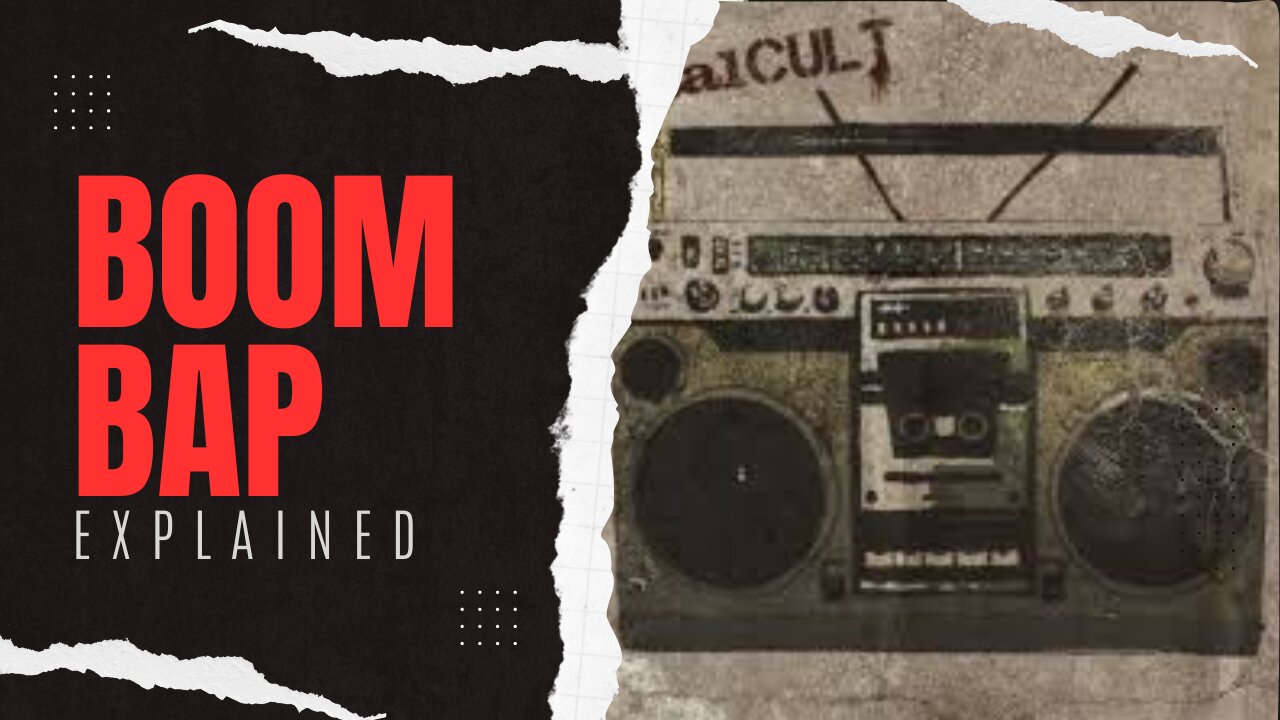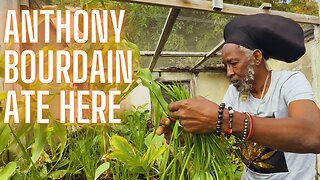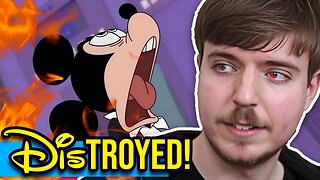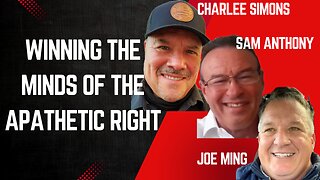Premium Only Content

Boom Bap Explained
In the bustling streets of the Bronx during the late 1980s, a musical revolution was underway. Hip-hop culture was blooming, and within it emerged a distinctive rhythmic style that would become a hallmark of the genre - Boom Bap.
Boom Bap, an onomatopoeic representation of its characteristic drum pattern, quickly became synonymous with the essence of hip-hop. It embodied the raw energy, lyricism, and soulful essence that the genre's pioneers aimed to express.
At the heart of Boom Bap lies its infectious drum pattern. Imagine walking down the street, feeling the pavement shake with each emphatic "boom" of the kick drum, followed by the sharp "bap" of the snare. This simple yet powerful rhythm became the foundation on which countless hip-hop anthems were built.
The beauty of Boom Bap lies not only in its simplicity but also in its versatility. Producers craft their beats by meticulously sampling fragments from classic funk, jazz, and soul records. They breathe new life into forgotten melodies and drum breaks, creating a tapestry of musical elements that connect generations.
Boom Bap is more than just a drum pattern; it's an art form. It's about flipping those samples, chopping them up, and creating something entirely new. It's like digging through musical history and weaving a fresh narrative from the past.
Boom Bap is not just about beats; it's about the power of the spoken word. The style puts a heavy emphasis on lyricism, empowering rappers to tell their stories, share their struggles, and voice their truths.
Boom Bap allows me to express myself fully. I can convey my experiences, thoughts, and emotions in a way that connects with the listener on a deeper level. It's like poetry over beats - pure magic.
The style attracted lyricists like bees to honey, and soon, an era of "Golden Age" hip-hop emerged. Icons such as A Tribe Called Quest, Wu-Tang Clan, Nas, and Gang Starr dominated the scene with their impeccable flow and thought-provoking verses.
While the '90s witnessed the pinnacle of Boom Bap's popularity, its influence transcended time. In the early 2000s, the genre experienced a revival, with artists like J Dilla, MF DOOM, and Madlib championing the style.
Today, Boom Bap continues to resonate with hip-hop artists and fans alike. Its timeless appeal can be heard in various sub-genres, with artists blending old-school elements with contemporary sounds to create something fresh and innovative.
Boom Bap may have originated decades ago, but its essence remains alive in hip-hop's DNA. The style's authenticity and soulfulness continue to inspire new generations of producers and artists.
Boom Bap, the heartbeat of hip-hop, continues to reverberate through the years. Its unyielding rhythm, thought-provoking lyrics, and rich history make it an essential part of the culture, reminding us all of the enduring power of music to bring people together and spark change.
And so, the legacy of Boom Bap lives on, weaving a tapestry of beats and rhymes that will undoubtedly echo through generations to come.
-
 LIVE
LIVE
Wahzdee
45 minutes agoPUBG is 8 Years Old & Still Beats Every Other BR 🤷♂️🎯
14 watching -
 7:12
7:12
MichaelMotamedi
15 hours agoInside the Sacred World of Rastafarian Food
531 -
 11:24
11:24
LFA TV
1 day agoARTIFICIAL INTELLIGENCE SAYS J6 JUDGES ARE CORRUPT!
2.4K2 -
 9:02
9:02
ARFCOM News
14 hours agoTrump Fixes Concealed Carry | Time Travelling Judge | DoJ Goes After CA Infringements
734 -
 18:05
18:05
Mrgunsngear
13 hours ago $1.17 earnedHeckler & Koch VP9A1 K Review: The Best Do All Handgun?
2.72K4 -
 14:40
14:40
Clownfish TV
12 hours agoDisney Getting DESTROYED by YouTube...
5553 -
 10:28
10:28
ariellescarcella
12 hours agoThis Is NOT A Normal Face : The Psychology Behind Woke Manipulation
671 -
 57:56
57:56
CharLee Simons Presents Do Not Talk
2 days agoHow to Win the Minds of the APATHETIC RIGHT with Joe Ming & Sam Anthony
113 -
 9:15
9:15
VSOGunChannel
9 hours agoWhy Haven't They Freed the ATF's Political Prisoners?
1.34K4 -
 49:01
49:01
Standpoint with Gabe Groisman
1 day agoHigh Fashion Canceled Her for Working for Trump
8.37K6